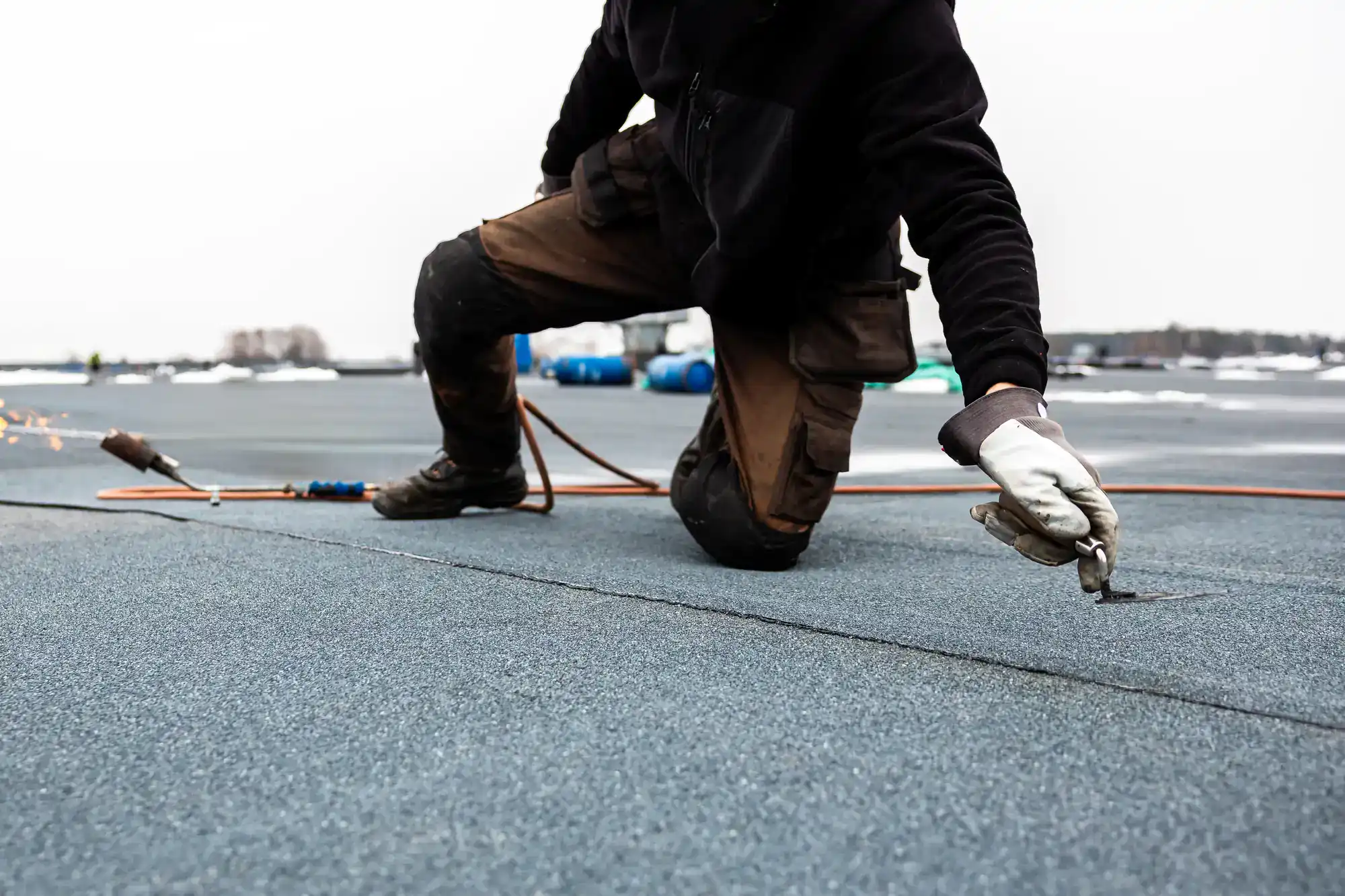
Hear from Our Customers
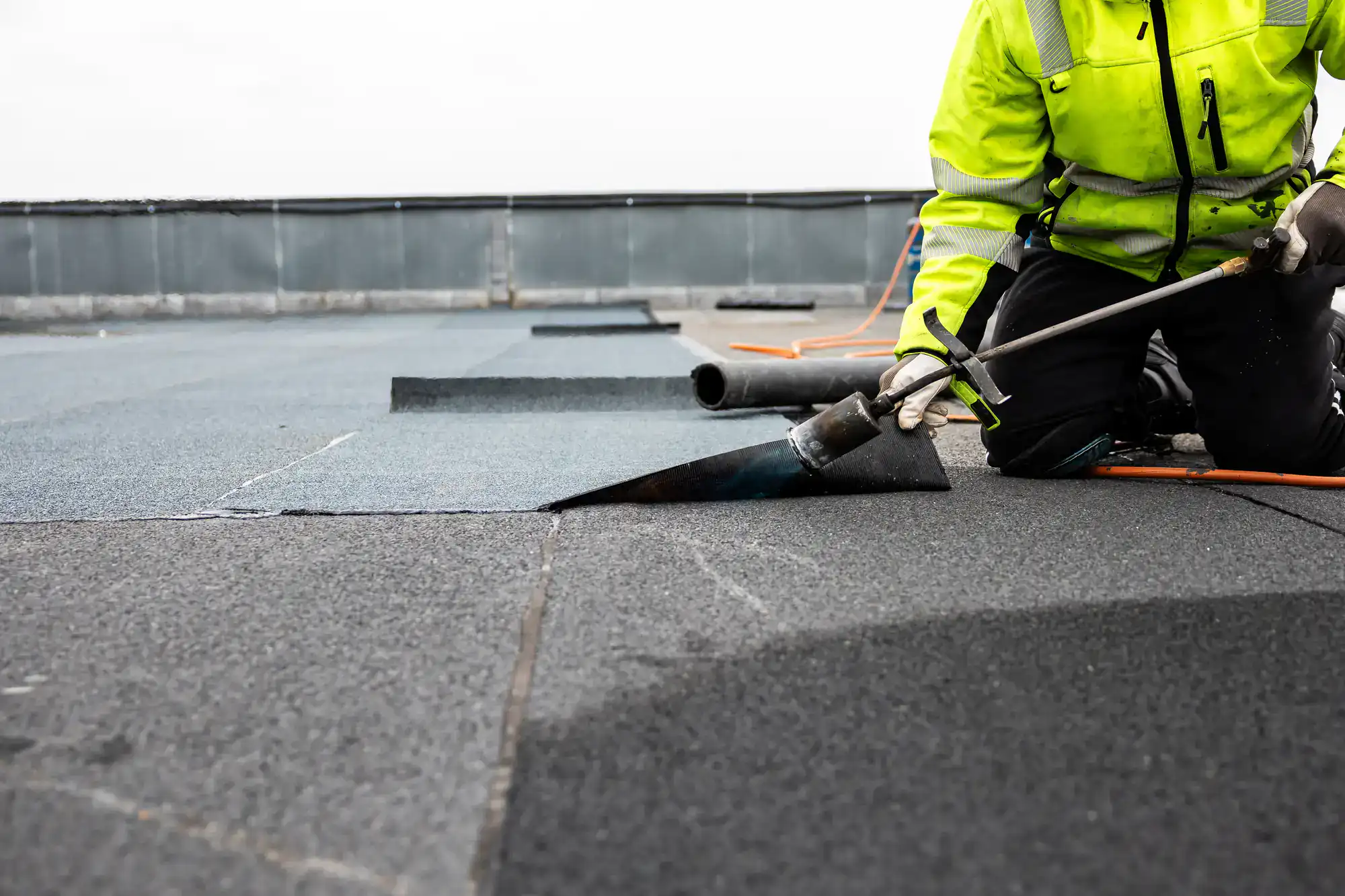
You’ll sleep better knowing your flat roof can handle whatever Long Island weather throws at it. No more buckets catching drips during storms. No more worrying about interior damage or emergency calls to tenants.
When your flat roof is installed correctly with the right materials, you get decades of reliable protection. Your heating and cooling costs drop because proper insulation and reflective surfaces keep your building comfortable year-round.
You’ll have one less thing to worry about, and your property value stays protected. That’s what happens when flat roofing is done right the first time.
We’ve been handling flat roofing projects across Babylon and Suffolk County for years. We understand how coastal weather affects different roofing materials, and we know which solutions work best for Long Island properties.
We’re not the cheapest option, and that’s intentional. You’re investing in materials that last, installation that’s done right, and service that’s there when you need it.
Local property owners trust us because we show up when we say we will, we explain what needs to be done without the sales pitch, and our work holds up over time.
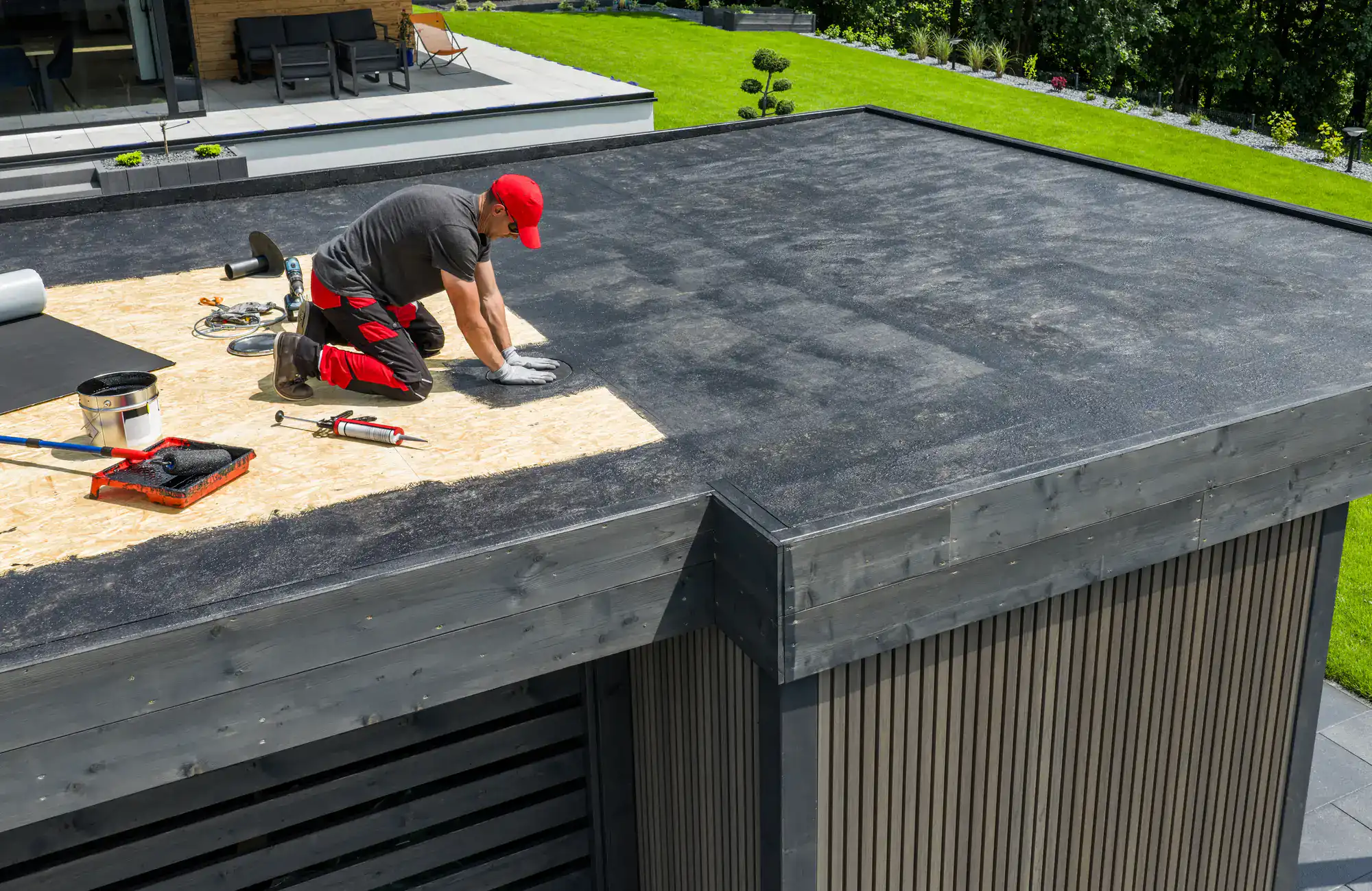
First, we inspect your current roof structure and identify any issues that need addressing before installation. We measure everything precisely and discuss material options that make sense for your building and budget.
Next, we prepare the surface, ensuring proper drainage and installing insulation where needed. We then install your chosen roofing system—whether that’s TPO, EPDM rubber roofing, or modified bitumen—using manufacturer-approved techniques.
Finally, we test the entire system for leaks, clean up completely, and walk you through maintenance recommendations. You get a roof that’s ready to protect your property for decades, plus clear guidance on keeping it that way.
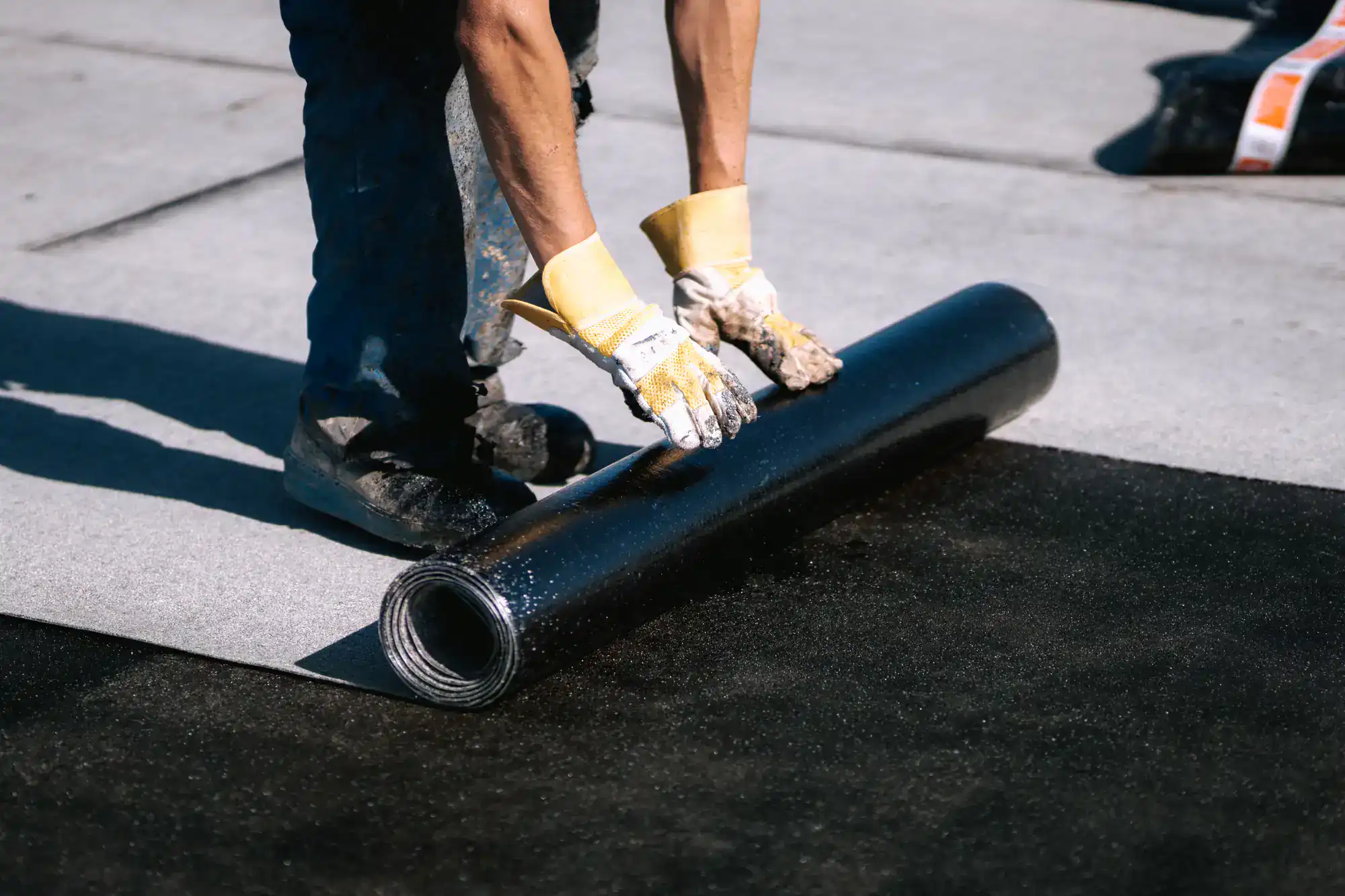
Ready to get started?
We install TPO flat roofing for energy efficiency and durability, EPDM rubber roofing for proven long-term performance, and modified bitumen systems for buildings that need extra protection. Each material handles Babylon’s weather differently, so we match the right system to your specific needs.
Our flat roof leak detection service uses advanced techniques to find problems before they cause major damage. We also provide professional flat roof coating and waterproofing to extend the life of existing systems.
For commercial properties, we understand that roof failure means business disruption. Our low-slope roofing solutions are designed to minimize downtime and provide reliable protection for years. Residential customers get the same attention to detail, whether you’re dealing with a modern home design or an older property with flat roof sections.
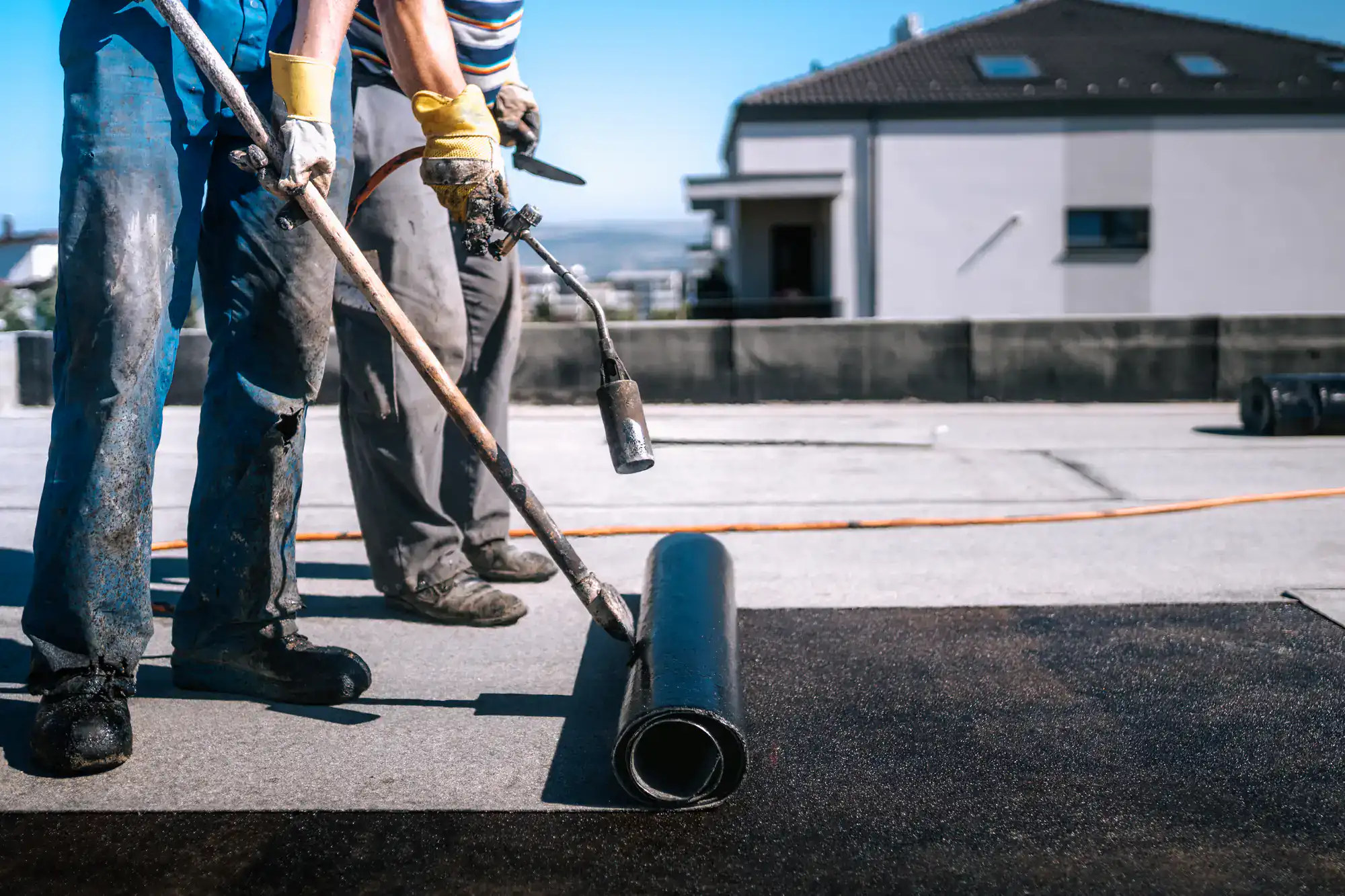
TPO roofing typically lasts 15-20 years in Long Island’s coastal climate when installed properly. The material handles temperature fluctuations well and resists UV damage from summer sun exposure.
The key is proper installation with adequate insulation and drainage. Poor installation can cut that lifespan in half, which is why material quality and contractor expertise both matter.
We see TPO systems lasting longer when they’re maintained properly—cleared of debris, inspected annually, and resealed at penetrations when needed.
EPDM is a single rubber membrane that’s installed in large sheets with minimal seams. It’s flexible, handles building movement well, and has a proven track record of 20+ years in coastal environments.
Modified bitumen is a multi-layer system that’s torch-applied or cold-adhered. It provides excellent waterproofing and is more puncture-resistant than EPDM, making it ideal for roofs with foot traffic or equipment.
Both work well in Babylon’s climate. EPDM is often more cost-effective for simple roof shapes, while modified bitumen makes sense for complex roofs or buildings where durability is the top priority.
We start with a visual inspection, looking for obvious damage, ponding water, or deteriorated seams. Then we use moisture meters to detect water infiltration that isn’t visible yet.
For harder-to-find leaks, we perform controlled water testing, flooding specific sections while monitoring for interior water entry. This pinpoints exact leak locations without guesswork.
Infrared scanning can also reveal wet insulation or structural damage beneath the roofing membrane. This comprehensive approach means we find all the problems, not just the obvious ones, so repairs actually solve the issue.
Many flat roof problems can be repaired if caught early enough. Small membrane tears, failed seams, or localized damage often need targeted repairs rather than full replacement.
We evaluate the overall condition, age of the system, and extent of damage before recommending repair versus replacement. If more than 30% of the roof needs work, replacement usually makes more financial sense.
Repairs work best when the underlying structure is sound and the majority of the roofing system is still performing well. We’re honest about what can be fixed and what needs to be replaced—no sense throwing good money at a roof that’s beyond repair.
Poor drainage is the biggest culprit. When water sits on flat roofs instead of draining properly, it eventually finds its way through seams, penetrations, or worn membrane areas.
Thermal expansion and contraction from temperature swings also stress roofing materials over time. Long Island’s freeze-thaw cycles can be particularly hard on systems that weren’t designed to handle that movement.
Wind damage from coastal storms, UV exposure, and normal aging all contribute to failure. The key is choosing materials rated for our climate and installing them with proper drainage, insulation, and attachment methods.
Flat roof installation typically ranges from $8-15 per square foot depending on the material, roof complexity, and current condition of the structure. TPO systems are generally on the lower end, while modified bitumen installations cost more.
Factors that affect pricing include roof access, insulation requirements, drainage modifications, and removal of existing materials. Complex roof shapes with multiple penetrations cost more than simple rectangular buildings.
We provide detailed estimates that break down material and labor costs so you understand exactly what you’re paying for. No surprises, no hidden fees—just transparent pricing for quality work that lasts.
Other Services we provide in Babylon